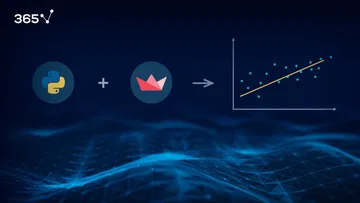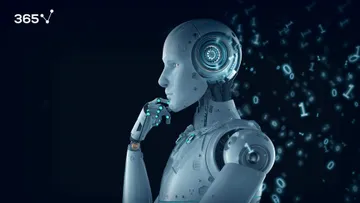Did you ever watch ‘Back to the Future’ and dream about driving a flying car? The cult classic did promise us this innovative transport as early as 2015, but that year has long since passed with no aerial automobiles in sight. However, we’ve made many technological advancements that we’re sure even Doc Brown would be impressed with. And it’s all thanks to the phenomenon we call machine learning.
Technically speaking, machine learning is a data analysis technique that requires little human intervention as the model performs the analysis and recognizes patterns in datasets itself. It’s largely considered a branch of artificial intelligence as it’s used to train AI models into automation.
In this article, we’re going to outline the different types of machine learning that you’ll come across as you learn.
What Types of Machine Learning Are There?
This field is rather new and evolving every day, making it quite dynamic regarding coined terms and techniques. Regardless, there are three major types of machine learning algorithms to get acquainted with:
- Supervised learning
- Unsupervised learning
- Reinforcement learning
We will be going over them in detail in order give you a better understanding of what each type entails, starting with supervised machine learning.
Supervised Learning
Supervised learning refers to the case where we provide the algorithm with inputs and their corresponding desired outputs. Based on this information, it learns how to produce outputs as close to the ones we are looking for. This machine learning type is the most straightforward and the most commonly used.
Let’s take a coffee machine that doesn’t know how to make coffee, for example. In a non-machine learning setting, the engineers will have to incorporate the coffee making settings into the electronics. Meanwhile, in machine learning, we won’t specifically provide instructions to the machine. Instead, we will give it several inputs, like the water and the coffee, and a desired output – a good cup of coffee. Then, the machine will work out the process on its own.
In this type of machine learning, the coffee maker would try various combinations of grinding, heating and pouring, based on the few inputs we’ve given it, training itself to reach the set goal every time. Essentially, the machine learning model does the work whilst we sit back and watch.
It is possible that it could learn to make the best coffee you’ve ever tried.
Furthermore, supervised learning could also be divided into additional sub-types:
- The models provide outputs or, otherwise said, categories (for example, cats or dogs).
- The outputs will be of numerical type. For instance, predicting the euro to dollar exchange rate will always give us a continuous number like 1.21 or 1.19.
Unsupervised Learning
The second machine learning type is unsupervised learning. With this type, we feed inputs into the model, but there are no target outputs. This means we don’t tell the algorithm exactly what our goal is. Instead, we ask it to find some sort of dependence or underlying logic in the data provided.
For instance, imagine we administrate the website cats&doggos.com. Users have the option to submit photos of their cats or dogs to the website. Once a photo has been submitted, we would like it to be automatically classified in the subpage cats or the subpage dogs.
In supervised learning, we would train the algorithm on a dataset of, say, 1000 cat photos and 1000 dog photos. Each would be labeled ‘cat’ or ‘dog’. The model would then learn how to interpret an input picture as either a cat or a dog, minimizing mismatches over the training set.
Sometimes, however, we may not have the resources or the need to label the whole dataset. With unsupervised learning, we can train the algorithm without labeling the photos – we simply ask it to split them into two groups based on visual similarities. The result would be two groups that are unlabeled. Once we obtain those, we can examine them and draw the conclusions ourselves.
This type of machine learning model is especially useful when our goal is to split a dataset into a certain number of categories we do not know of prior to implementing it. That, by the way, is called clustering.
Reinforcement Learning
The final type of machine learning is reinforcement learning – perhaps the most human-like of all three. In this case, we train our model how to act in an environment based on the feedback it receives.
The algorithm’s performance is influenced by positive or negative feedback. If it does something correctly – it receives a reward. If it does something undesirable, on the other hand, the agent is penalized so it knows not to throw the same error again. The more positive feedback it gets, the better and faster it learns.
Training such a model is much like training your pet, rewarding it with treats every time it achieves a goal - sits, rolls over, or gives you a pawn. In the same way, we can teach the machine learning algorithm how to play Super Mario by rewarding it for successfully progressing with an increase in its game score.
Types of Machine Learning: Next Steps
Whether it’s self-automated vehicles, medical diagnosis, making market predictions or training the next big AI model, machine learning is practically essential in everything we do today. And while we might not be ready to launch flying cars like in ‘Back to the Future’ yet, other groundbreaking innovations are right at our doorstep.
Using the different types of machine learning, data scientists are constantly changing the world! So, why not start your journey today?







